Vietnam just keeps getting better. This past week was full of new adventures again. One of the first things Nico and I did was explore the Vinh Moc tunnel complex. During the Vietnam War Vinh Moc was strategically located near the Demilitarized Zone, the DMZ as it was called. This zone marked the border between North and South Vietnam. The tunnels were built to shelter people from the intense bombing in the area.
The American forces believed the villagers of Vinh Moc were supplying food and armaments to the North Vietnamese which in turn hindered the American planes on their way to bomb Hanoi. The idea was to force the villagers of Vinh Moc to leave the area by bombing them but as is typical in Vietnam there was nowhere else to go. The villagers initially dug the tunnels to move their village 10 meters underground but the Americans had designed bombs that burrowed down 10 meters into the ground. So against these odds, the villagers moved the village to a depth of 30 meters. It was constructed in several stages beginning in 1966 and used until early 1972. The complex grew to include wells, kitchens, rooms for each family and spaces for healthcare. Around sixty families lived in the tunnels and as many as 17 children were born inside the tunnels.
The tunnels were a success and no villagers lost their lives. The only direct hit was from a bomb that failed to explode; the resulting hole was utilized as a ventilation shaft.
Here is where the DMZ was located during the war.
A view of the Vinh Moc tunnels. They are only about five feet high so I could not stand upright in them. It felt a little creepy. If you are claustrophobic you would not feel comfortable.
A depiction of a woman giving birth in the tunnels.
Families lived together underground and kids were home schooled. It seems unimaginable to have to live like that but at least they were safe.
There are three levels of tunnels. Here is Nico descending down to a lower level.
There are no visible signs of the DMZ anymore. Most battle areas have been covered up by rice paddies and farms.
Moving on, one thing the French left over in Vietnam is a taste for coffee. There are thousands of small coffee shops around the country. Here’s one in Hue full of customers sitting on those little stools.
Grandmother and baby at a cafe we stopped at.
Local girl.
We passed one area where people had spread out what seemed to be bits of fish or other sea creatures. They were drying them in the sun evidently. I did not find out what they were but maybe they were making fish flakes or something.
One day we met a Portuguese couple, Rafael and Sophia, who were cycling around Vietnam then going to Cambodia and Thailand. They were a lot of fun and we cycled together for a couple days. One of the first places we went was Elephant Springs, a waterfall and swimming hole. Here I am about to slide down the rapids into the pool.
A view of the pool with Rafael diving off a rock.
Under the torrent. It was like a shoulder massage.
Every time we stopped we were besieged by kids, so excited to be able to to say “Hello” to a foreigner. Some would follow that up with “what is your name?” But few knew more English than those two phrases.
Here are Nico, Rafael and Sophia at dinner in a small beach town we stayed at for a couple nights.
After dinner we walked the beach and were attracted to a group singing karaoke. It turned out it was a birthday party. We were quickly invited in and joined the group, drinking and singing. Here are Rafael and Sophia crooning.
We left the beach and headed for the city of Danang. But to get there we had to climb up a decent sized mountain, about 500 m to the pass. Here are some photos of the ride.
It was a cloudy humid day, with rain forecast. Fortunately we made it to Danang with minimal showers. Here are some fishing boats on a lake.
Here I am struggling up the steep road. Uphill for about 10 km with 8% grades. Not terrible, but the toughest climbing I’ve done since Japan. It took me two hours to get to the pass.
Here we are at the Hai Van pass. It has historically been a key strategic post and has been garrisoned for hundreds of years, up to and including the war with America. Now it is a tourist attraction with several mildly pushy vendors.
The American War
If you are interested in learning more about the war in Vietnam and why the USA got involved, I have included a summary timeline below. The roots of the conflict go back to French colonial times and the history includes the usual litany of corruption, desire for power, naive decision making, and misinformation. Another sad story of how governments inflict untold suffering and destruction on their citizens.
WARNING: THE FOLLOWING TIMELINE DISPLAYS SOME GRAPHIC PHOTOS. VIEWER DISCRETION IS ADVISED.
Uneasy French Rule
• 1887: France imposes a colonial system over Vietnam, calling it French Indochina. The system includes Tonkin, Annam, Cochin China and Cambodia. Laos is added in 1893. The Vietnamese resent French rule and sporadic rebellions occur.
• 1923-25: Vietnamese nationalist Ho Chi Minh is trained in the Soviet Union as an agent of the Communist International (Comitern).
• February 1930: Ho Chi Minh founds the Indochinese Communist Party at a meeting in Hong Kong.
• June 1940: Nazi Germany takes control of France.
• September 1940: Japanese troops invade French Indochina and occupy Vietnam with little French resistance.
• May 1941: Ho Chi Minh and communist colleagues establish the League for the Independence of Vietnam. Known as the Viet Minh, the movement aims to resist French and Japanese occupation of Vietnam.
• March 1945: Japanese troops occupying Indochina carry out a coup against French authorities and announce an end to the colonial era, declaring Vietnam, Laos and Cambodia independent.
• August 1945: Japan is defeated by the Allies in World War II, leaving a power vacuum in Indochina. France begins to reassert its authority over Vietnam.
• September 1945: Ho Chi Minh declares an independent North Vietnam and models his declaration on the American Declaration of Independence of 1776 in an (unsuccessful) effort to win the support of the United States.
• July 1946: Ho Chi Minh rejects a French proposal granting Vietnam limited self-government and the Viet Minh begins a guerrilla war against the French.
Prelude to War
• March 1947: In an address to Congress, President Harry Truman states that the foreign policy of the United States is to assist any country whose stability is threatened by communism. The policy becomes known as the Truman Doctrine.
• June 1949: The French install former emperor Bao Dai as head of state in Vietnam.
• October 1949: Following a civil war, Chinese Communist leader Mao Zedong declares the creation of the People’s Republic of China.
• January 1950: The People’s Republic of China and the Soviet Union formally recognize the communist Democratic Republic of Vietnam and both begin to supply economic and military aid to communist resistance fighters within the country.
• February 1950: Assisted by the Soviet Union and the newly Communist China, the Viet Minh step up their offensive against French outposts in Vietnam.
• June 1950: The United States, identifying the Viet Minh as a Communist threat, steps up military assistance to France for their operations against the Viet Minh.
• March-May 1954: French troops are humiliated in defeat by Viet Minh forces at Dien Bien Phu. The defeat solidifies the end of French rule in Indochina.
• April 1954: In a speech, U.S. President Dwight D. Eisenhower says the fall of French Indochina to communists could create a “domino” effect in Southeast Asia. This so-called domino theory guides U.S. thinking on Vietnam for the next decade.
The Geneva Accords
• July 1954: The Geneva Accords establish North and South Vietnam with the 17th parallel as the dividing line. The agreement also stipulates that elections are to be held within two years to unify Vietnam under a single democratic government.
• 1955: Catholic nationalist Ngo Dinh Diem emerges as the leader of South Vietnam, with U.S. backing, while Ho Chi Minh leads the communist state to the north. But Diem and his brother are corrupt and autocratic rulers. They cancel the unification election, fearing rightly that Ho Chi Minh would be elected president.
• May 1959: North Vietnam forces begin to build a supply route through Laos and Cambodia to South Vietnam in an effort to support guerrilla attacks against Diem’s government in the south. The route becomes known as the Ho Chi Minh Trail and is greatly expanded and enhanced during the Vietnam War.
• July 1959: The first U.S. soldiers are killed in South Vietnam when guerrillas raid their living quarters near Saigon.
• September 1960: Ho Chi Minh, facing failing health, is replaced by the militant Le Duan as head of North Vietnam’s ruling communist party.
• December 1960: The National Liberation Front (NLF) is formed with North Vietnamese backing as the political wing of the antigovernment insurgency in South Vietnam. The United States views the NLF as an arm of North Vietnam and starts calling the military wing of the NLF the Viet Cong—short for Vietnam Cong-san, or Vietnamese communists.
• May 1961: President John F. Kennedy sends helicopters and 400 Green Berets to South Vietnam and authorizes secret operations against the Viet Cong.
• January 1962: In Operation Ranch Hand, U.S. aircraft start spraying Agent Orange and other herbicides over rural areas of South Vietnam to kill vegetation that would offer cover and food for guerrilla forces.
• February 1962: Ngo Dinh Diem survives a bombing of the presidential palace in South Vietnam as Diem’s extreme favoritism toward South Vietnam’s Catholic minority alienates him from most of the South Vietnamese population, including Vietnamese Buddhists.
• January 1963: At Ap Bac, a village in the Mekong Delta southwest of Saigon, South Vietnamese troops are defeated by a much smaller unit of Viet Cong fighters. The South Vietnamese are overcome despite their four-to-one advantage and the technical and planning assistance of U.S. advisers.
• May 1963: In a major incident of what becomes known as the “Buddhist Crisis,” the government of Ngo Dinh Diem opens fire on a crowd of Buddhist protestors in the central Vietnam city of Hue. Eight people, including children, are killed.
• June 1963: A 73-year-old monk immolates himself while sitting at a major city intersection in protest, leading other Buddhists to follow suit in coming weeks. Photographer Malcolm Browne captured the scene in Saigon for the Associated Press, and the stark black and white image quickly became an iconic visual of the turbulent 1960s. Diem’s government becomes increasingly totalitarian. The United States’ already declining confidence in Diem’s leadership continues to slide.
• November 1963: The United States backs a South Vietnam military coup against the unpopular Diem, which ends in the brutal killing of Diem and his brother, Ngo Dinh Nhu. Between 1963 and 1965, 12 different governments take the lead in South Vietnam as military coups replace one government after another.
• November 1963: President Kennedy is assassinated in Dallas, Texas. Lyndon B. Johnson becomes president.
America Enters the Vietnam War
• August 1964: USS Maddox is allegedly attacked by North Vietnamese patrol torpedo boats in the Gulf of Tonkin (the attack is later disputed), leading President Johnson to call for air strikes on North Vietnamese patrol boat bases. Two U.S. aircraft are shot down and one U.S. pilot, Everett Alvarez, Jr., becomes the first U.S. airman to be taken prisoner by North Vietnam.
• August 1964: The attacks in the Gulf of Tonkin spur Congress to pass the Gulf of Tonkin Resolution, which authorizes the president to “take all necessary measures, including the use of armed force” against any aggressor in the conflict.
• November 1964: The Soviet Politburo increases its support to North Vietnam, sending aircraft, artillery, ammunition, small arms, radar, air defense systems, food and medical supplies. Meanwhile, China sends several engineering troops to North Vietnam to assist in building critical defense infrastructure.
• February 1965: President Johnson orders the bombing of targets in North Vietnam in Operation Flaming Dart in retaliation for a Viet Cong raid at the U.S. base in the city of Pleiku and at a nearby helicopter base at Camp Holloway.
• March 1965: President Johnson launches a three-year campaign of sustained bombing of targets in North Vietnam and the Ho Chi Minh Trail in Operation Rolling Thunder. The same month, U.S. Marines land on beaches near Da Nang, South Vietnam as the first American combat troops to enter Vietnam.
• June 1965: General Nguen Van Thieu of the Army of the Republic of Vietnam Governmental Military (ARVN), becomes president of South Vietnam.
More Troops, More Deaths, More Protests
• July 1965: President Johnson calls for 50,000 more ground troops to be sent to Vietnam, increasing the draft to 35,000 each month.
• August 1965: In Operation Starlite, some 5,500 U.S. Marines strike against the First Viet Cong Regiment in the first major ground offensive by U.S. forces in Vietnam. The six-day operation diffuses the Viet Cong regiment, although it would quickly rebuild.
• November 1965: Nearly 300 Americans are killed and hundreds more injured in the first large-scale battle of the war, the Battle of la Drang Valley. At the battle, in South Vietnam’s Central Highlands, U.S. ground troops are dropped onto and withdrawn from the battlefield by helicopter, in what would become a common strategy. Both sides declare victory.
• 1966: U.S. troop numbers in Vietnam rise to 400,000.
• June 1966: American aircraft attack targets in Hanoi and Haiphong in raids that are among the first such attacks on cities in North Vietnam.
• 1967: U.S. troop numbers stationed in Vietnam increase to 500,000.
• February 1967: U.S. aircraft bomb Haiphong Harbor and North Vietnamese airfields.
• April 1967: Huge Vietnam War protests occur in Washington, D.C., New York City and San Francisco.
• September 1967: Nguyen Van Thieu wins the presidential election of South Vietnam under a newly enacted constitution.
• November 1967: In the Battle of Dak To, U.S. and South Vietnamese forces resist an offensive by communist forces in the Central Highlands. The United States forces suffer some 1,800 casualties.
• January-April 1968: A U.S. Marine garrison at Khe Sanh in South Vietnam is bombarded with massive artillery by communist forces from the People’s Army of North Vietnam (PAVN). For 77 days, the marines and South Vietnamese forces fend off the siege.
North Vietnam Shocks America
• January 1968: The Tet Offensive begins, encompassing a combined assault of Viet Minh and North Vietnamese armies. Attacks are carried out in more than 100 cities and outposts across South Vietnam, including Hue and Saigon, and the U.S. Embassy is invaded. The effective, bloody attacks shock U.S. officials and mark a turning point in the war and the beginning of a gradual U.S. withdrawal from the region.
• February 11-17, 1968: This week records the highest number of U.S. soldier deaths during the war, with 543 American deaths.
• February-March 1968: Battles at Hue and Saigon end with American and ARVN victory as Viet Cong guerillas are cleared from the cities.
• March 16, 1968: At the U.S. massacre at My Lai, more than 500 civilians are murdered by U.S. forces. The massacre happens amid a campaign of U.S. search-and-destroy operations that are intended to find enemy territories, destroy them and then retreat. The massacre prompted global outrage and increased domestic opposition to the U.S. involvement in the Vietnam War.
• March 1968: President Johnson halts bombing in Vietnam north of the 20th parallel. Facing backlash about the war, Johnson announces he will not run for reelection.
• November 1968: Republican Richard M. Nixon wins the U.S. presidential elections on the campaign promises to restore “law and order” and to end the draft.
• May 1969: At Ap Bia Mountain, about a mile from the border with Laos, U.S. paratroopers attack entrenched North Vietnamese fighters in an attempt to cut off North Vietnamese infiltration from Laos. U.S. troops eventually capture the site (temporarily), which would be nicknamed Hamburger Hill by journalists due to the brutal carnage of the 10-day battle.
• September 1969: Ho Chi Minh dies of a heart attack in Hanoi.
• December 1969: The U.S. government institutes the first draft lottery since World War II, prompting ever more young American men—later disparaged as “draft dodgers”—to flee to Canada.
Gradual Withdrawal from Vietnam
• 1969-1972: The Nixon administration gradually reduces the number of U.S. forces in South Vietnam, placing more burden on the ground forces of South Vietnam’s ARVN as part of a strategy known as Vietnamization. U.S. troops in Vietnam are reduced from a peak of 549,000 in 1969 to 69,000 in 1972.
• February 1970: U.S. National Security Advisor Henry Kissinger begins secret peace negotiations with Hanoi politburo member Le Duc Tho in Paris.
• March 1969-May 1970: In a series of secret bombings known as “Operation Menu,” U.S. B-52 bombers target suspected communist base camps and supply zones in Cambodia. The bombings are kept under wraps by Nixon and his administration since Cambodia is officially neutral in the war, although The New York Times would reveal the operation on May 9, 1969.
• April-June 1970: U.S. and South Vietnamese forces attack communist bases across the Cambodian border in the Cambodian Incursion.
• May 3, 1970: In a bloody incident known as the Kent State Shooting, National Guardsmen fire on anti-war demonstrators at Ohio’s Kent State University, killing four students and wounding nine.
• June 1970: Congress repeals the Gulf of Tonkin Resolution to reassert control over the president’s ability to use force in the war.
Vietnamization Falters, America Exits
• January-March 1971: In Operation Lam Son 719, ARVN troops, with U.S. support, invade Laos in an attempt to cut off the Ho Chi Minh Trail. They are forced to retreat and suffer heavy losses.
• June 1971: The New York Times publishes a series of articles detailing leaked Defense Department documents about the war, known as the Pentagon Papers. The report reveals the U.S. government had repeatedly and secretly increased U.S. involvement in the war.
• March-October 1972: The People’s Army of Vietnam launches the large-scale, three-pronged Easter Offensive against the Army of the Republic of Vietnam and U.S. forces. While North Vietnam gains control of more territory in South Vietnam, the offensive isn’t the decisive blow its military leaders had hoped for.
• December 1972: President Nixon orders the launch of the most intense air offense of the war in Operation Linebacker. The attacks, concentrated between Hanoi and Haiphong, drop roughly 20,000 tons of bombs over densely populated regions.
• January 22, 1973: Former President Johnson dies in Texas at age 64.
• January 27, 1973: The Selective Service announces the end to the draft and institutes an all-volunteer military.
• January 27, 1973: President Nixon signs the Paris Peace Accords, ending direct U.S. involvement in the Vietnam War. The North Vietnamese accept a cease fire.
• February-April 1973: North Vietnam returns 591 American prisoners of war (including future U.S. Senator and presidential candidate, John McCain) in what is known as Operation Homecoming.
The Vietnam War Ends
• August 1974: President Nixon resigns in the face of likely impeachment after the Watergate Scandal is revealed. Gerald R. Ford becomes president.
• January 1975: President Ford rules out any further U.S. military involvement in Vietnam.
• April 1975: In the Fall of Saigon, the capital of South Vietnam is seized by communist forces and the government of South Vietnam surrenders. U.S. Marine and Air Force helicopters transport more than 1,000 American civilians and nearly 7,000 South Vietnamese refugees out of Saigon in an 18-hour mass evacuation effort.
• July 1975: North and South Vietnam are formally unified as the Socialist Republic of Vietnam under hardline communist rule.
• The War Dead: By the end of the war, more than 58,000 Americans lose their lives. Vietnam would later release estimates that 1.1 million North Vietnamese and Viet Cong fighters were killed, up to 250,000 South Vietnamese soldiers died and more than 2 million civilians were killed on both sides of the war. Some 3o0,000 Cambodians and 40,000 Laotians also died in the conflict.
OK, my question is this: America entered the war to stop the spread of communism. We know now, of course, that Communism was doomed to fail. But in the 1950s and 60s, it was seen as a real threat. But…should our smart presidents and advisors have known that communism would eventually fail and so engaging in a war to stop it was unnecessary? Were they consumed by an irrational fear that lead to millions of soldier and civilian deaths? Was it hubris thinking that the mighty USA could easily defeat an army of third world Vietnamese? I remember as a ten year old in 1970 wondering if I would have to go to Vietnam. Fortunately America withdrew in 1973 so I did not have to face that possibility. But even then I developed a mistrust of our government. Why should I go half way around the world to fight some people that have never done me any harm? As Muhammed Ali famously said after he refused induction into the U.S. Army, “I ain’t got no quarrel with them Viet Cong.”
Every time governments make bad decisions they chip away at the faith and trust of the people they are supposed to represent. Is it any wonder the US voters rejected the “traditional” politicians in the last presidential elections and voted in an outsider who proudly proclaimed that he was not a politician? Trump was elected in part, I believe, because millions of people were so disgusted with their politicians that any outsider would be preferable, even one as outrageous as Trump.
Anyway, enough editorializing. Any opinions on the war and its consequences? What would have happened if the USA just refused to get involved?
If you want to see a great documentary on the war, I just discovered this PBS Ken Burns documentary released in 2017.
That’s it for now. I am currently in Hoi An, headed south. It’s the rainy season so I have to cope with that every couple days, but I will be riding by some nice beaches so I hope the weather will cooperate.

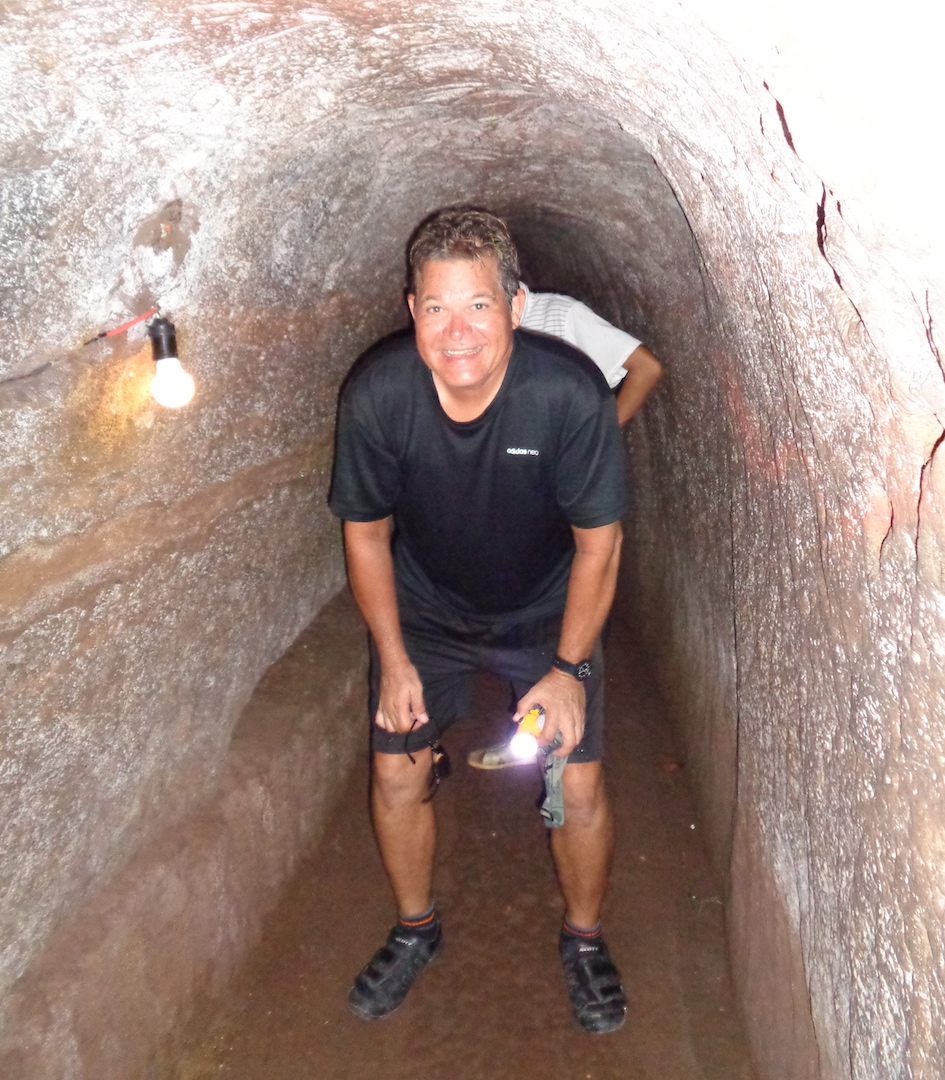
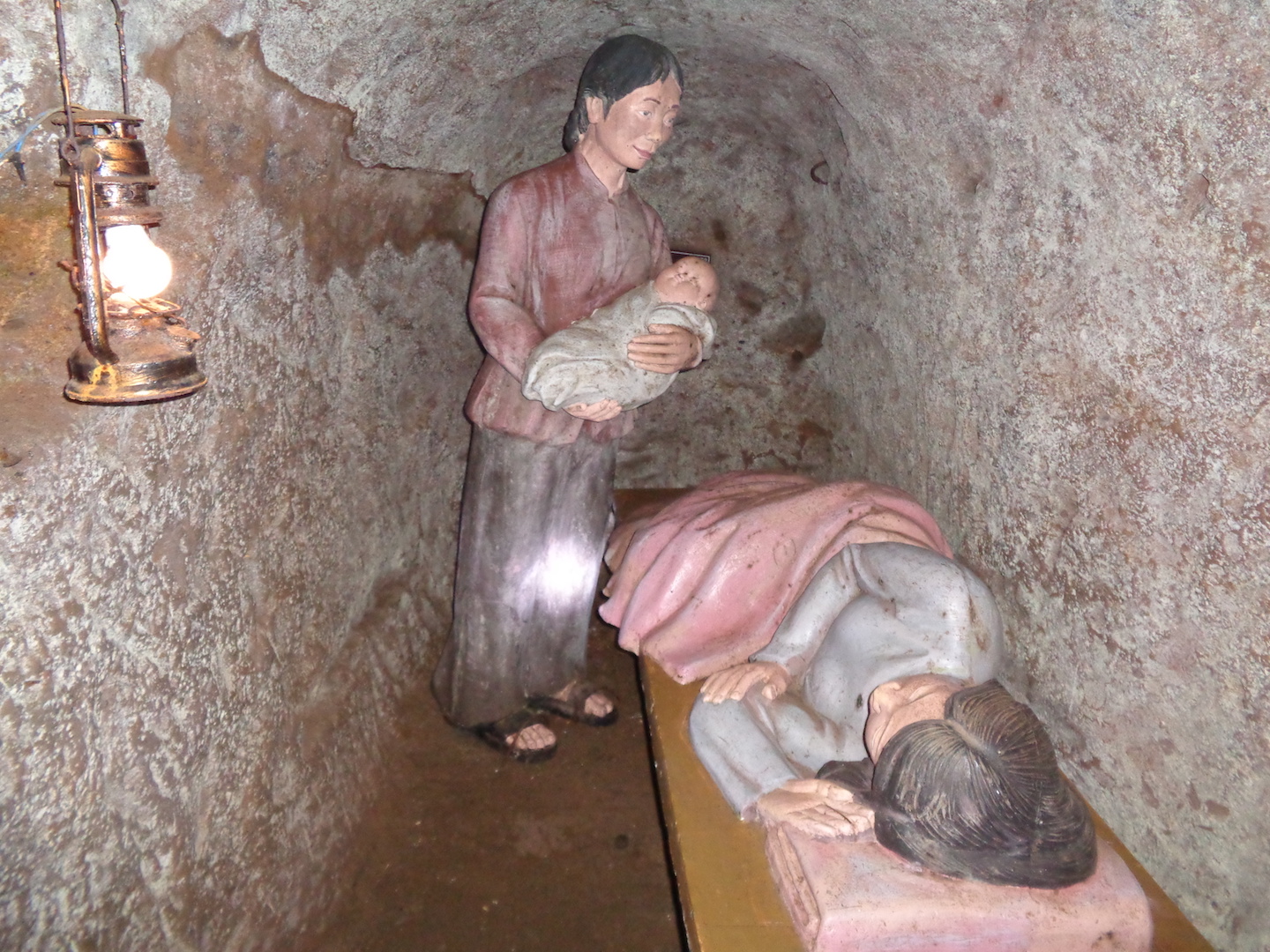
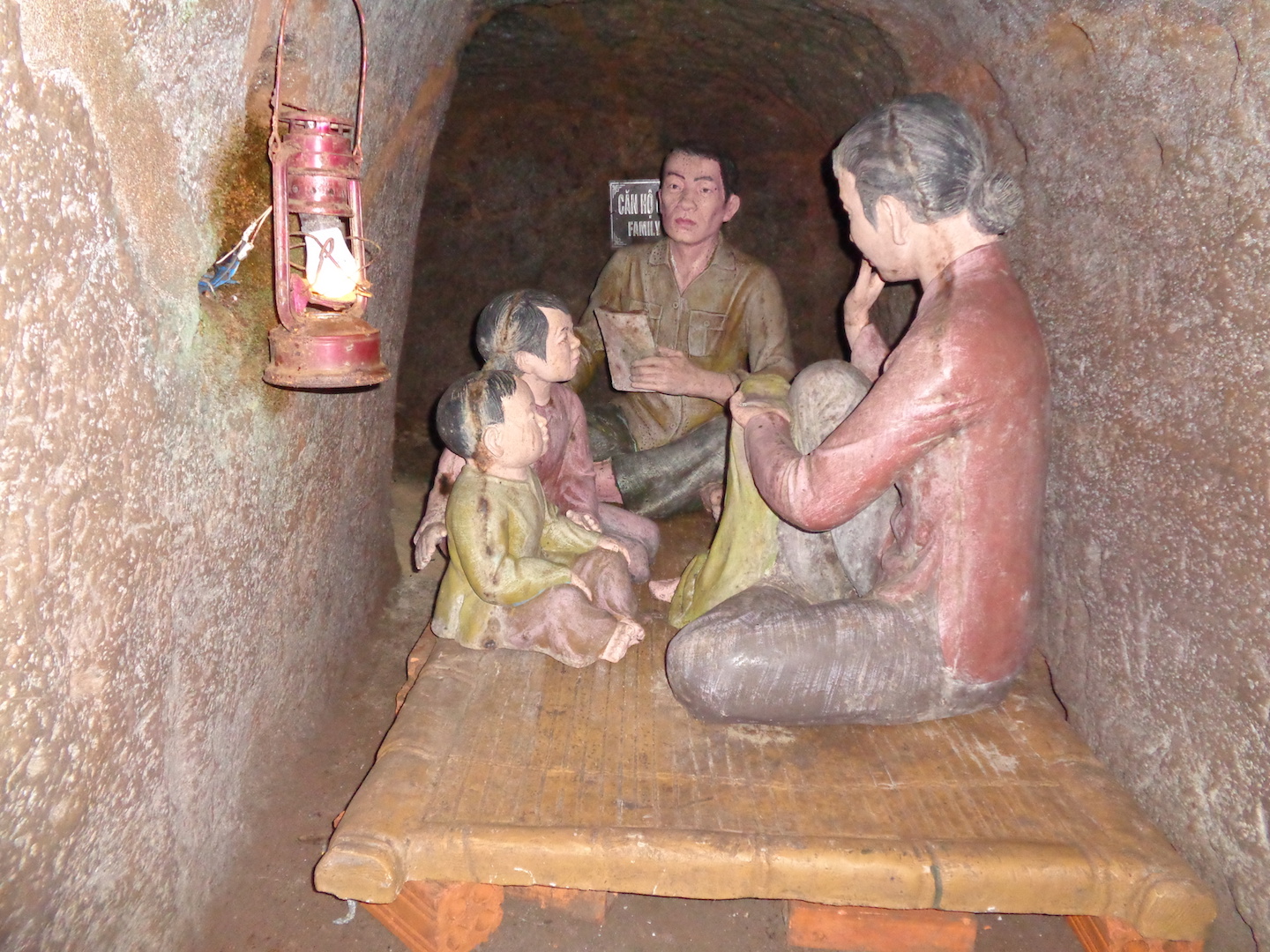

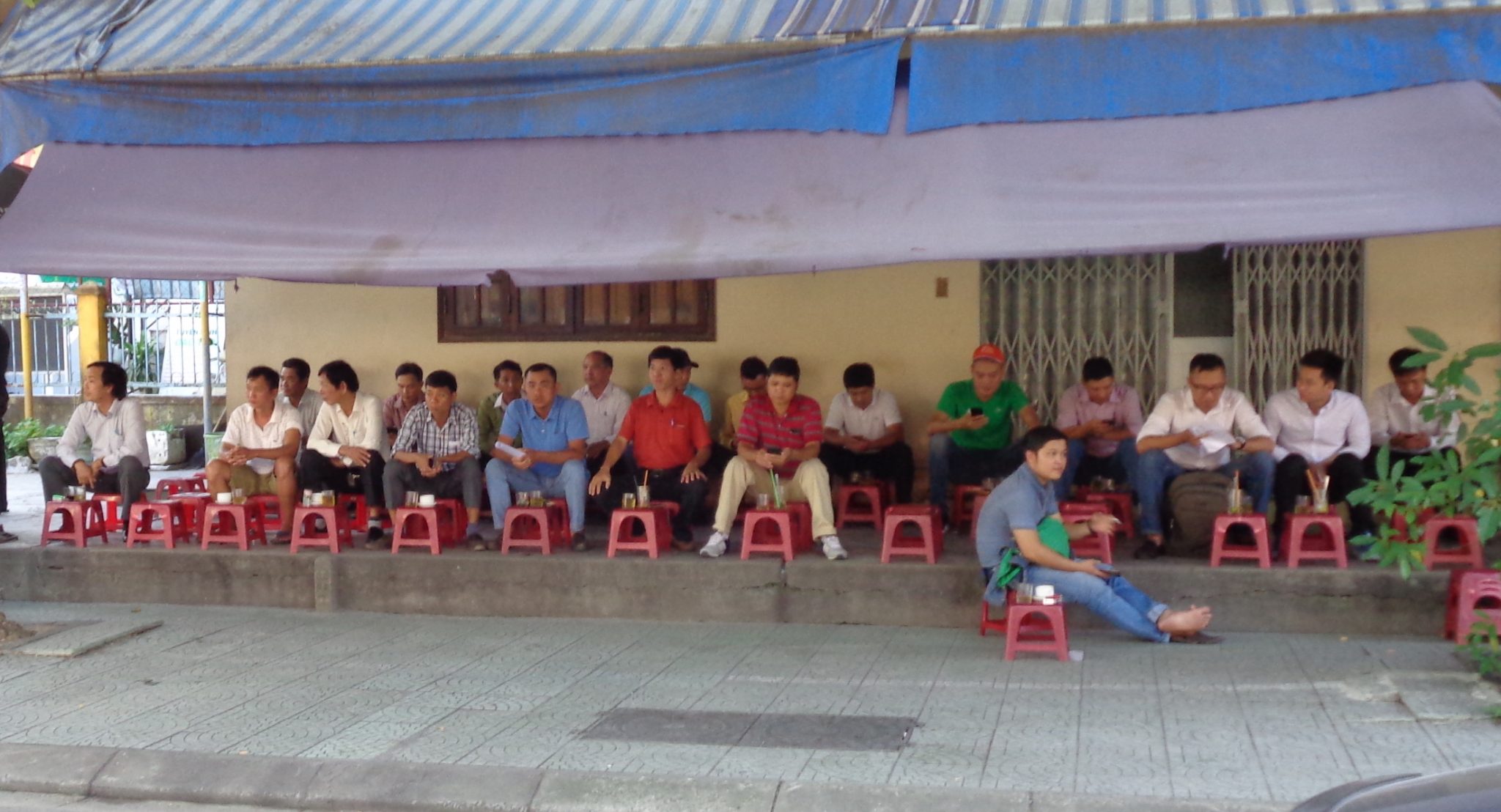
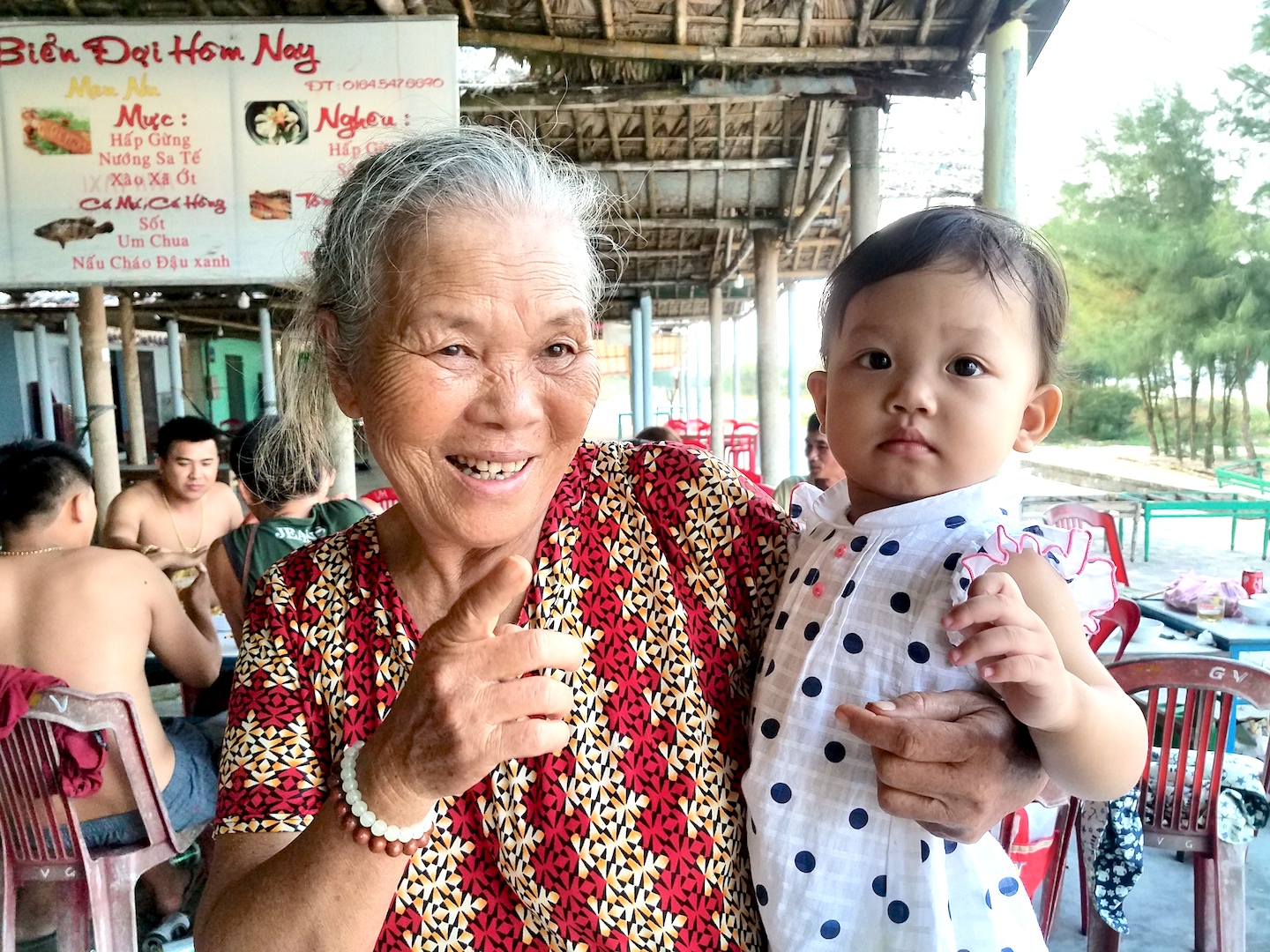
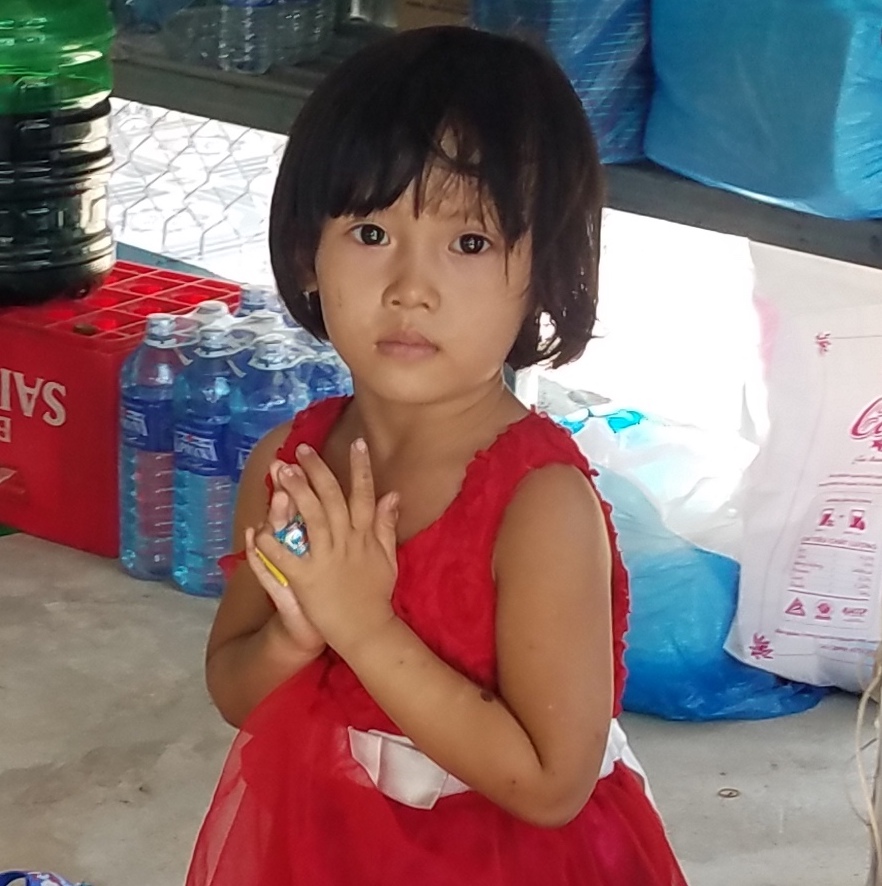
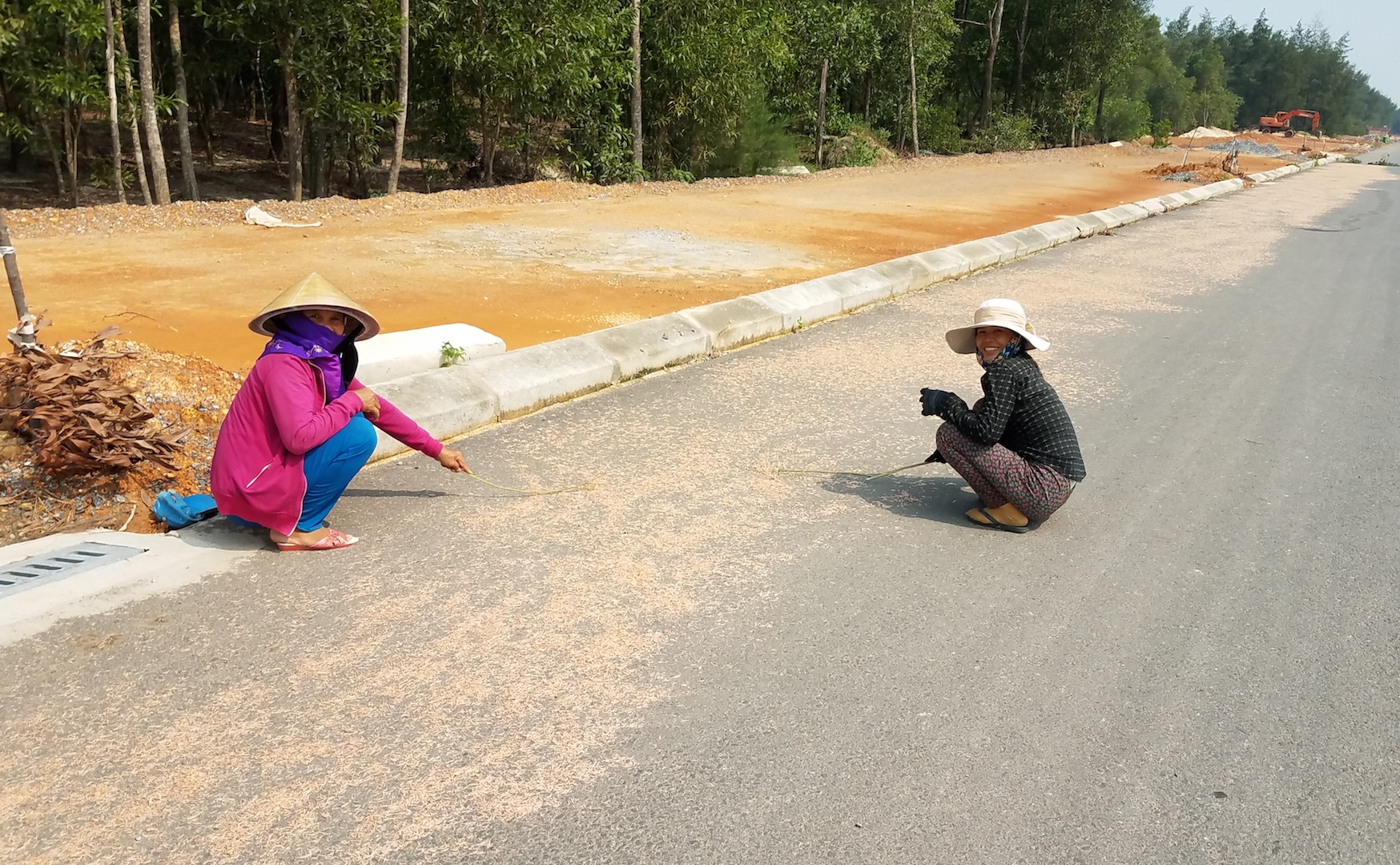
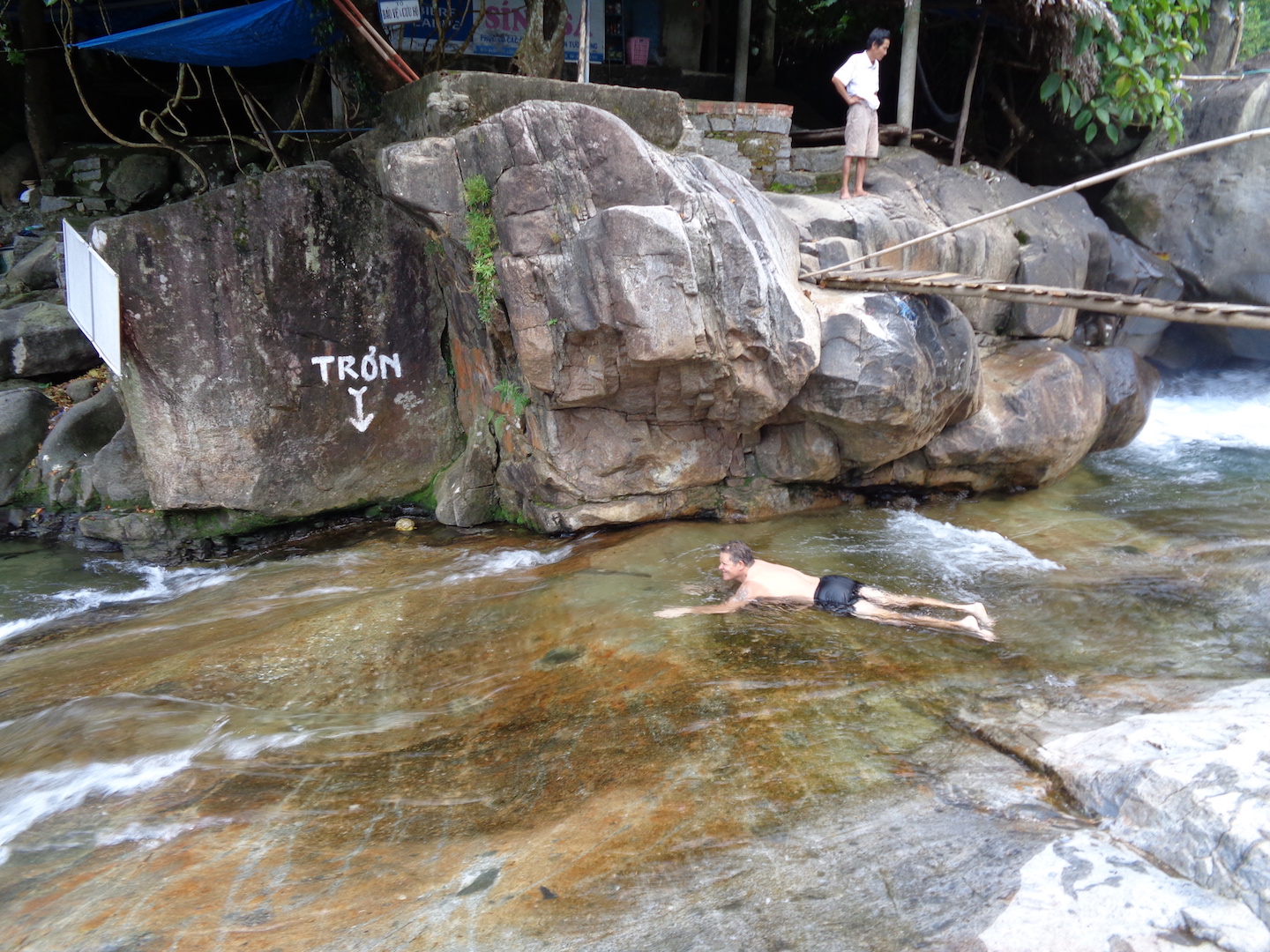

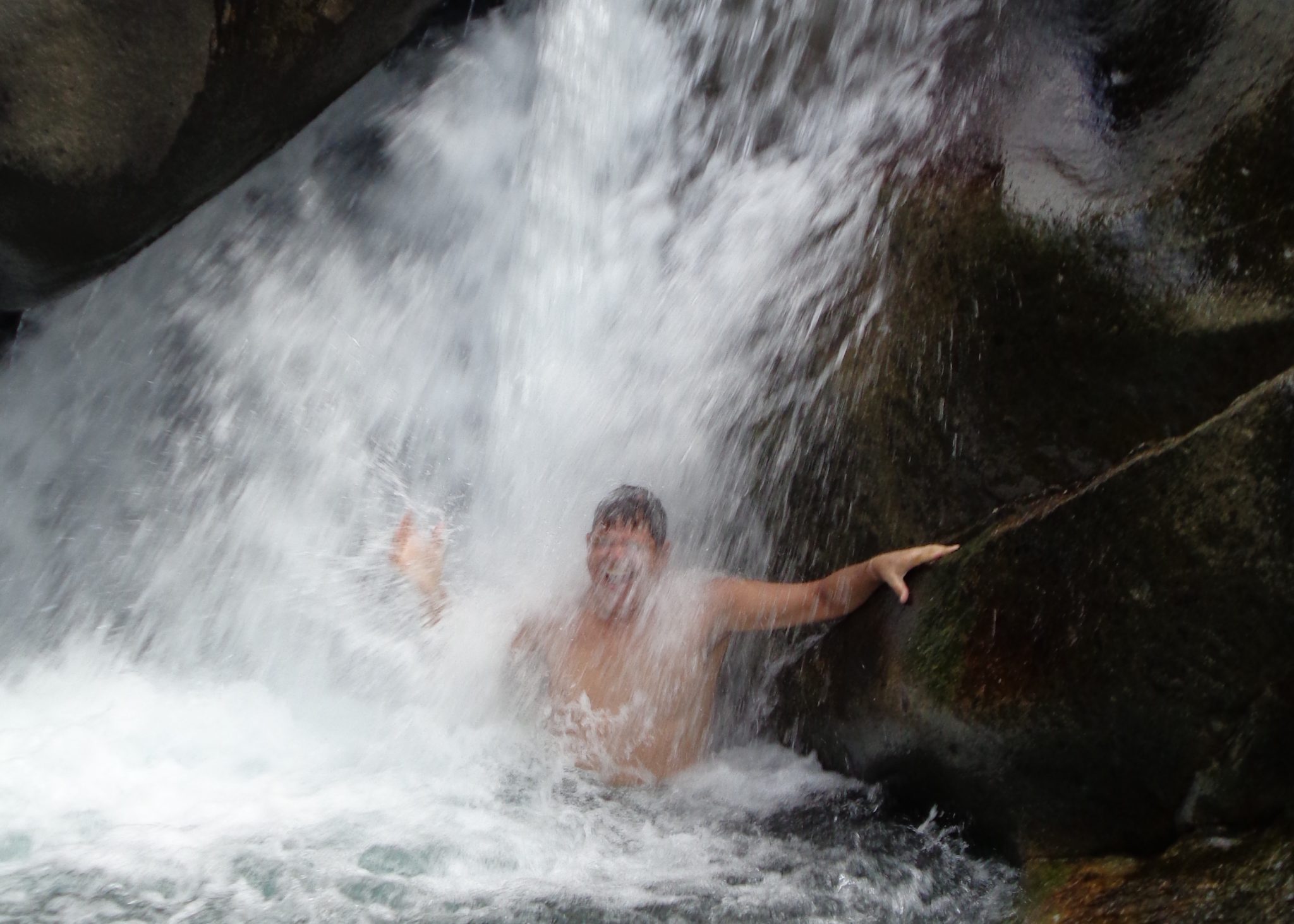
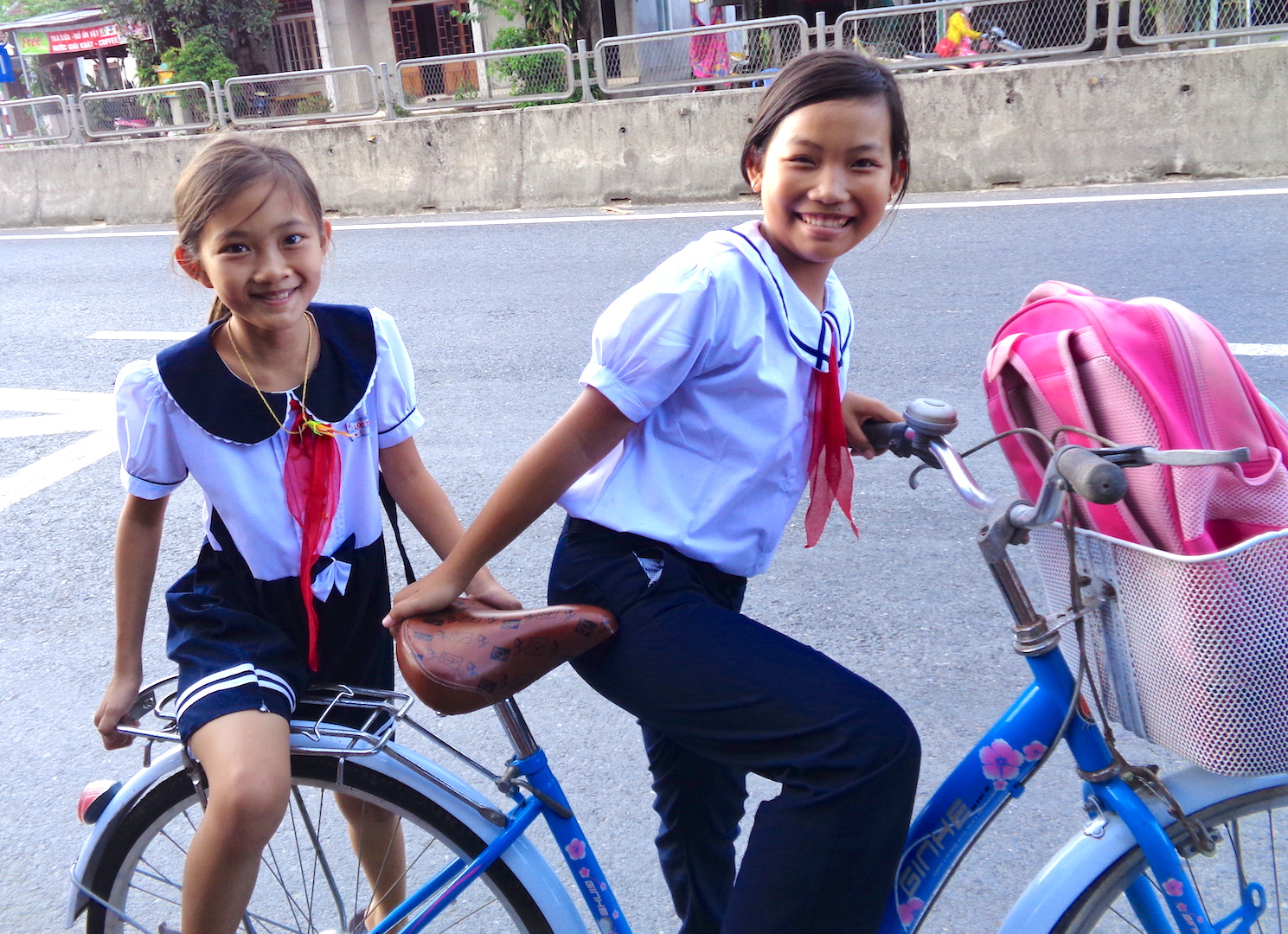
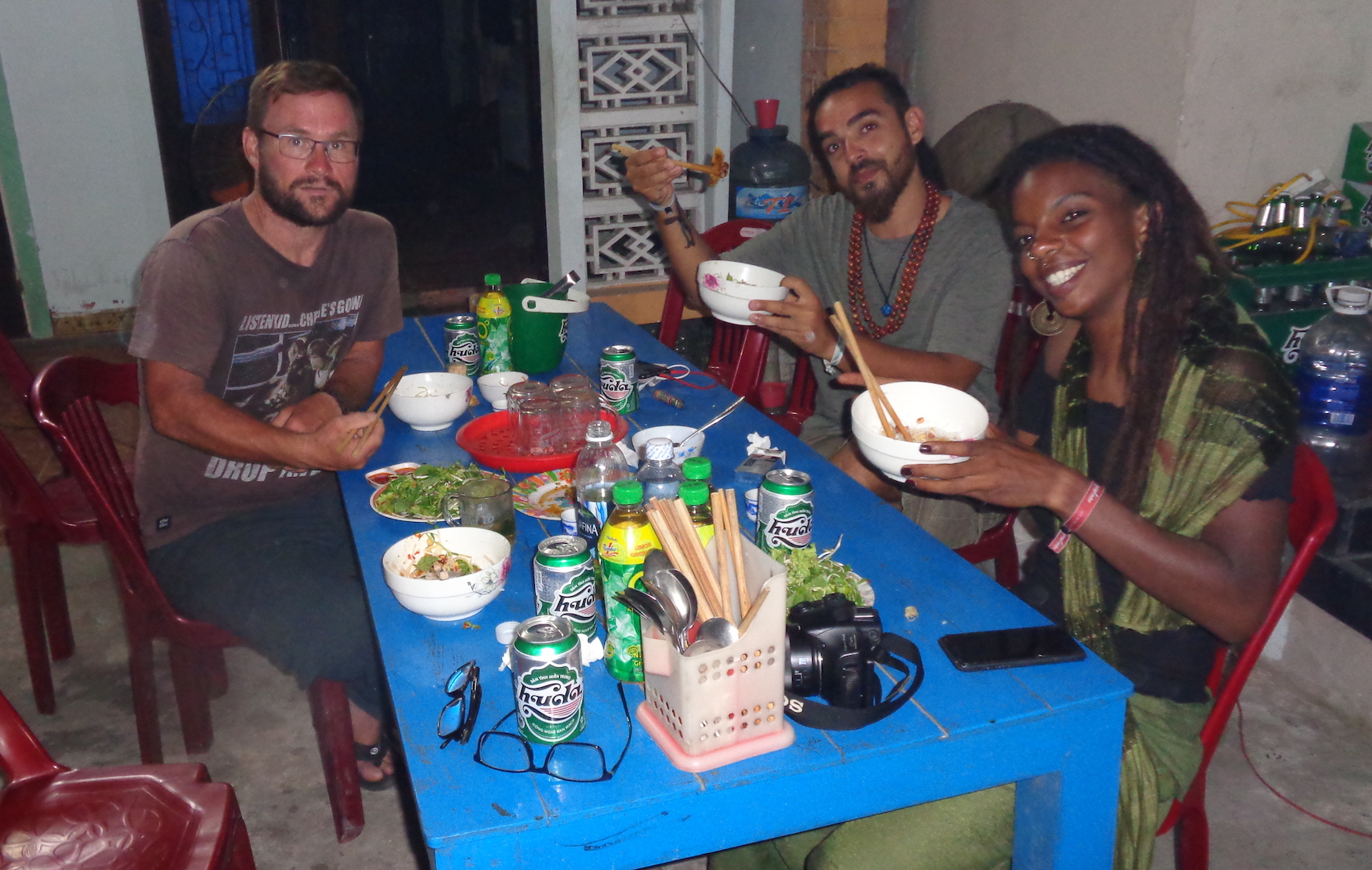
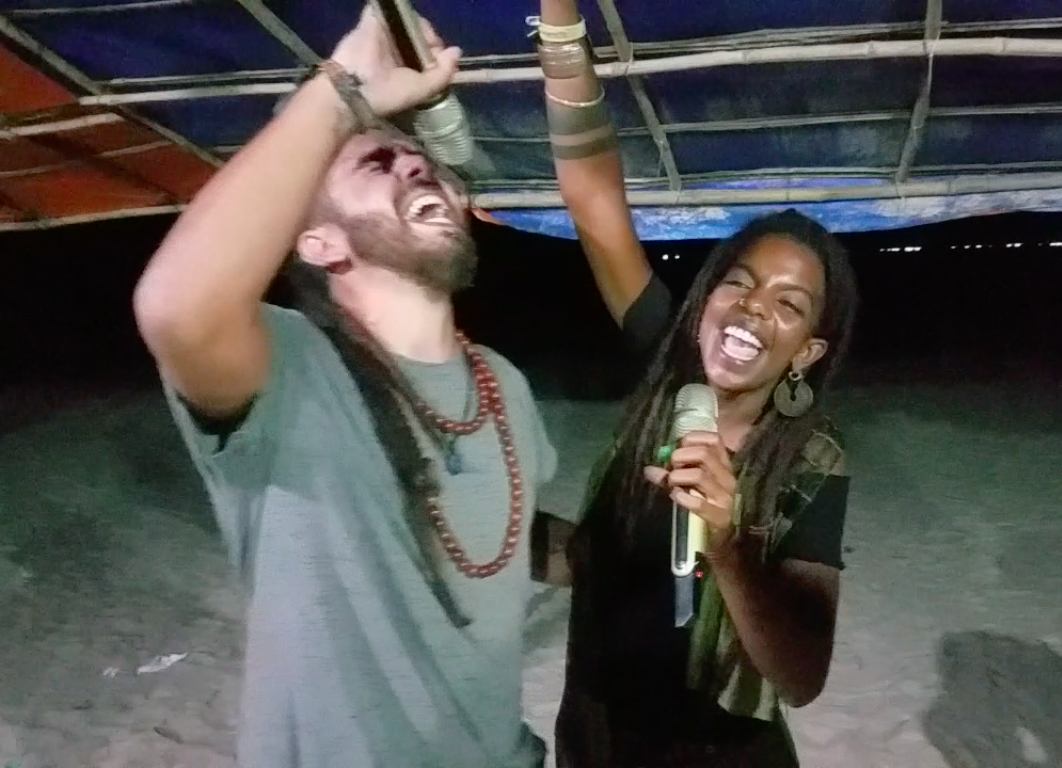

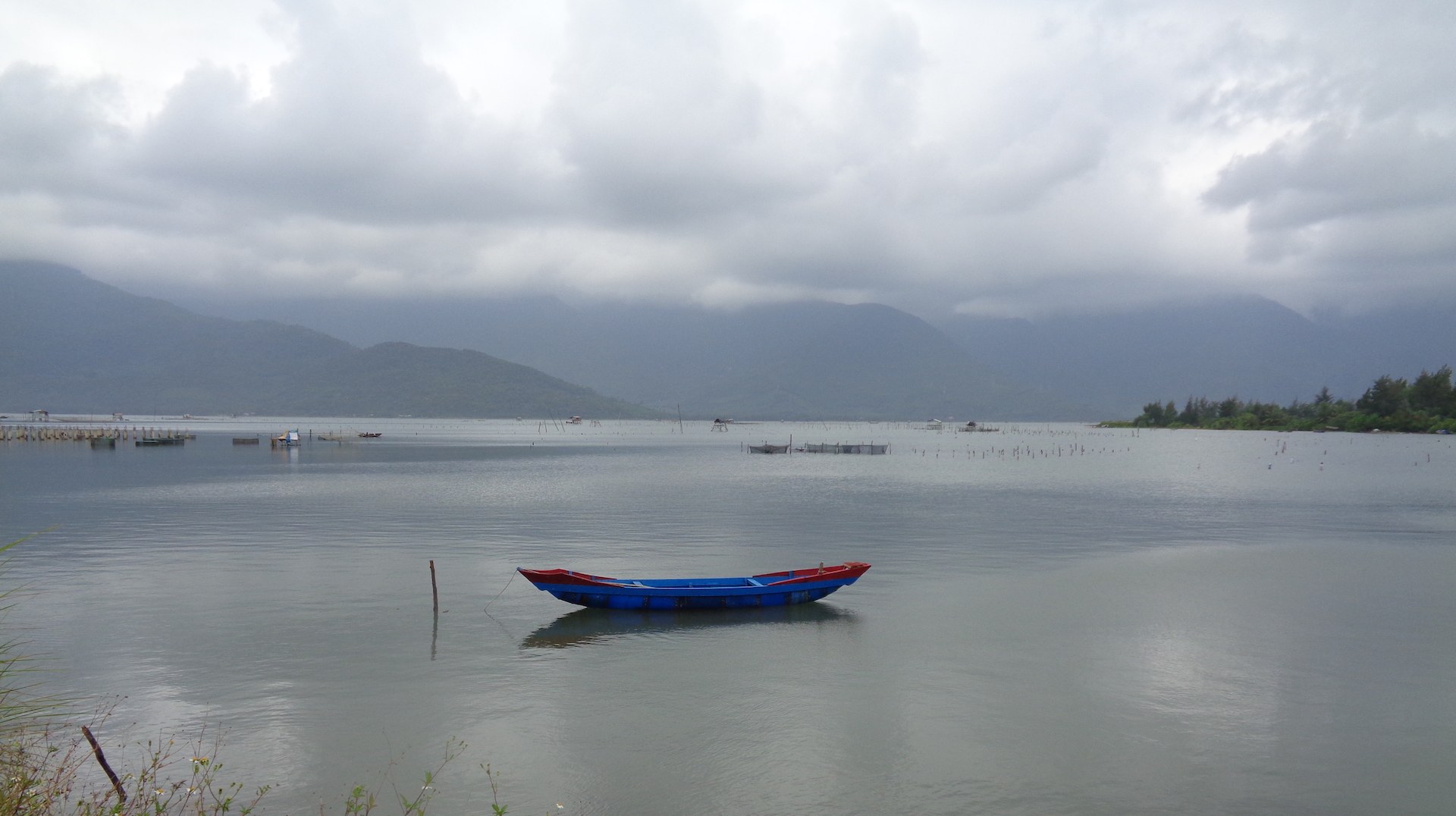


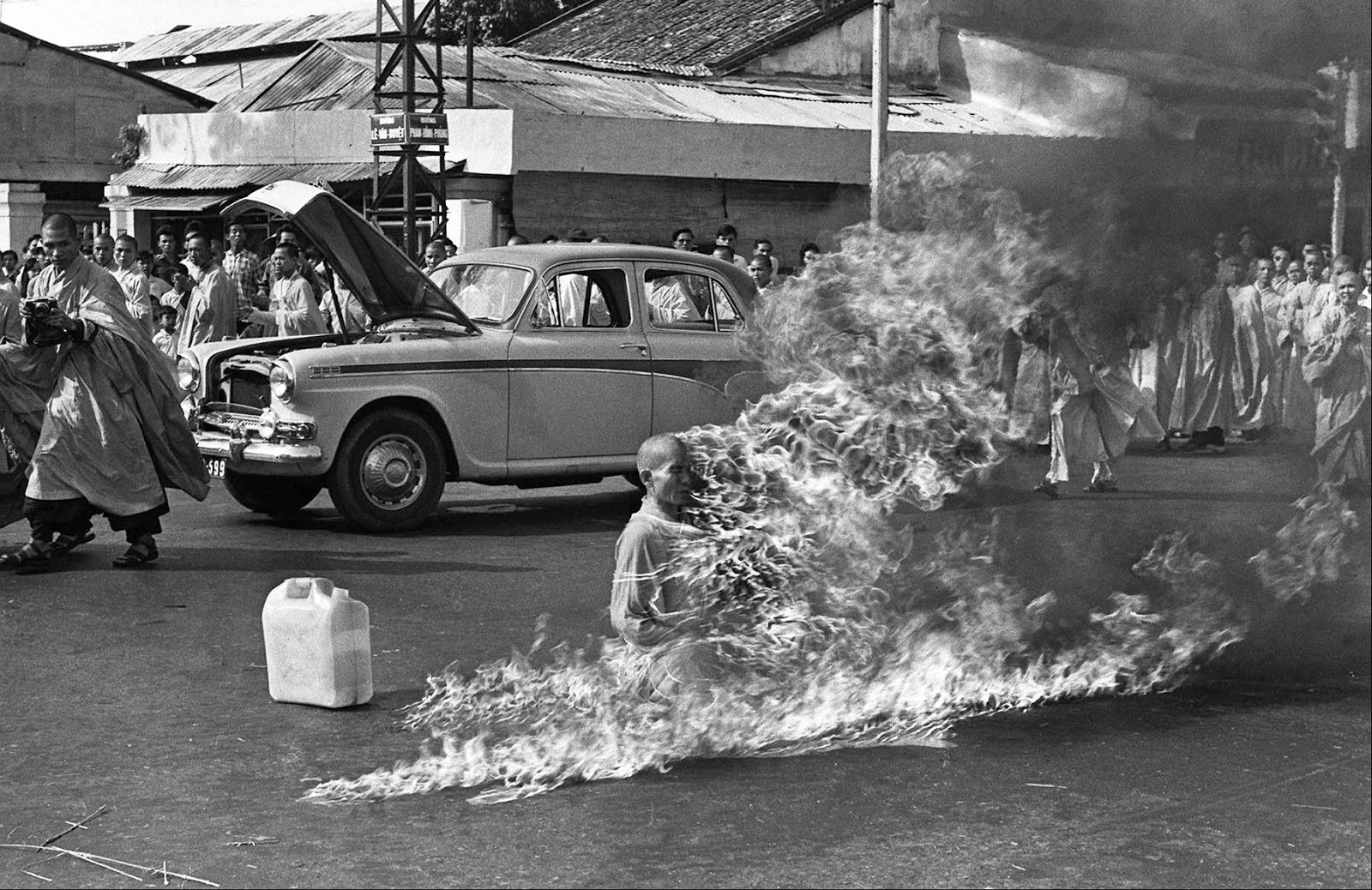

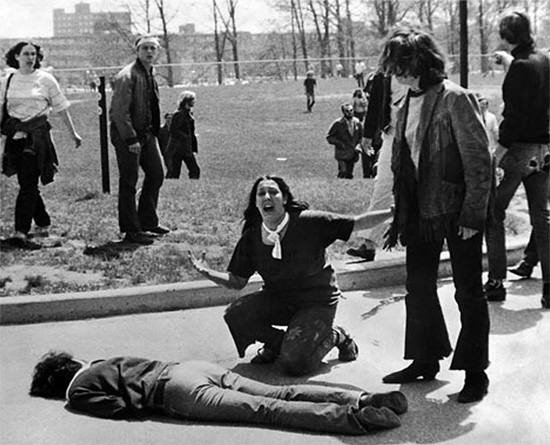

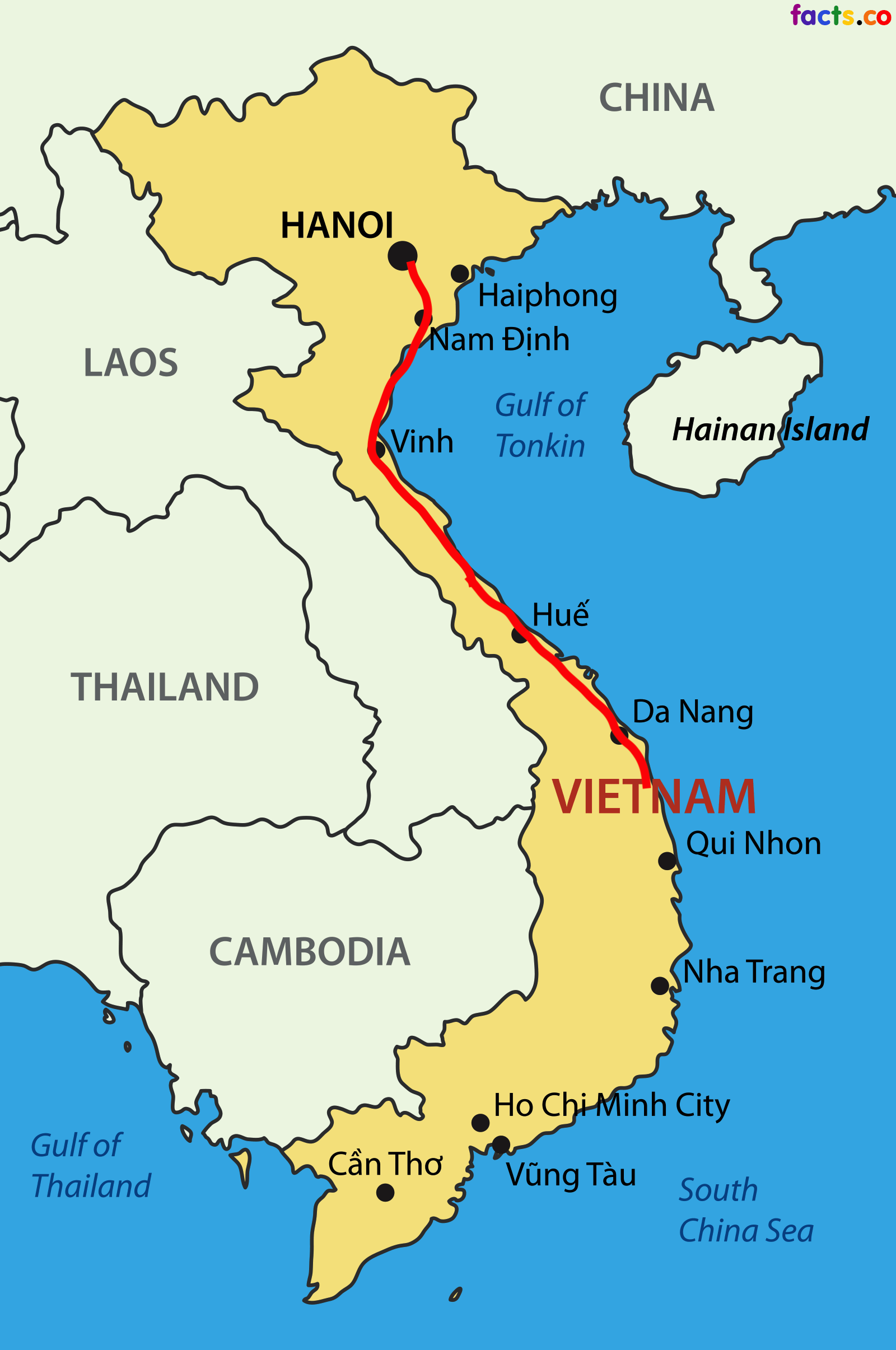
Hey Kev – Love your continued posts. I especially enjoyed your video biking among the scooters – BEEP BEEP! 🙂 So glad you are being greeted by so many friendly faces!
I think sometimes watching a well filmed movie can give the illusion that it is accurate or true – can anything be completely accurate? For those who like to look at differing opinions, the can check out http://www.wilsontimes.com/stories/ken-burns-was-wrong-about-vietnam-war,100643 and https://www.youtube.com/watch?v=qeBC7DQoAbY.
Overall, it was a tragedy of misfortune for all involved. War is hell.
Hey Suzanne,
Thanks for those links. I am still watching the Ken Burns film so I will weigh in after finishing it and watching those clips. But yes, war is hell, and I have not even been in the military. One thing about Vietnam though is that it’s wet. There are rice paddies, canals, pools of water everywhere, and it’s hot, humid, rainy and muddy. It would be miserable just to walk around and hack through the dense bush through the waist deep water while avoiding snakes, spiders and other bugs. But during the war, on top of all that, people are trying to kill you! I really can’t imagine what it was like or how I would have managed. We are lucky to live in peaceful times.
I agree about the natural environmental torture as well. Not hospitable at all!
Your comment about ‘peaceful times’, however, leaves me numb while at the same time full of ache. What is peace? The times we live in certainly have war – wars – of all types. Classic wars around the globe, tribal wars, religious wars and so on. Here at home, political wars have become physical wars of assault and battery — unruly mobs which more and more are going unchecked by authorities. Some have decided civility is no longer necessary until they get their “power” they inaccurately feel they’ve lost by no cause of their own. Closing in on the potential of civil war, here we are … and for what? My side didn’t win so I’m going to do everything and ANYthing so you can’t win again?
It’s painful to watch and frightening to know it can happen in your own community. Will people check themselves before it is too late? Will it require an even more horrific event to stop the insanity?
“Deceit is in the hearts of those who plot evil, but those who promote peace will have joy.” Proverbs 12:20
“Turn from evil and do good; seek peace and pursue it.” Psalm 34:14
Peace be with you as you travel and may God’s peace find an easy path to journey the globe and touch the world with love and joy.
Hugs!
Amen.